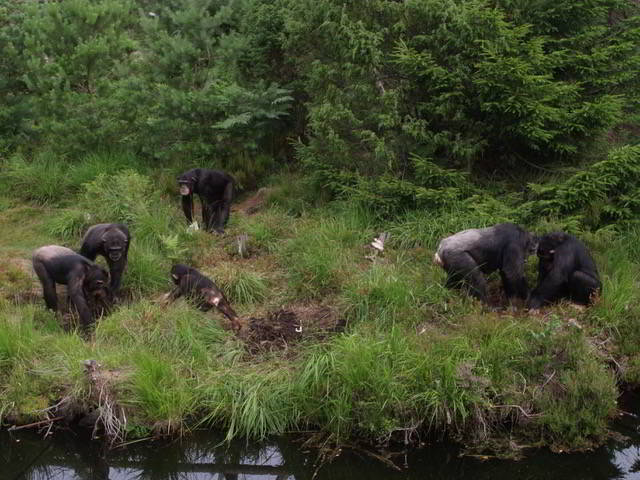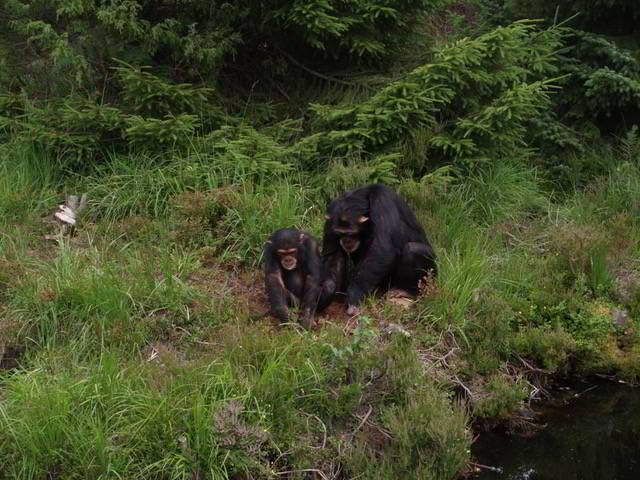Press Releases Archive
15.05.2019
Chimpanzees use sticks to dig up food
Spontaneously tool use by captive chimpanzees captured on camera
A new study shows that chimpanzees spontaneously use tools to dig for food such as roots and tubers – even when they have not previously learned this behavior. Researchers from the Universities of Tübingen in Germany, Oslo (Norway), Linköping (Sweden) and Wisconsin-Madison (USA) conducted a study to find out if chimpanzees would use sticks to dig for buried food even if they had never seen it done before. The study has been published in the journal PLOS ONE.
Alba Motes-Rodrigo of Tübingen’s Institute of Prehistory and Medieval Archaeology and her colleagues conducted the experiment at Kristiansand Zoo in Norway, supervised by Dr. Hernandez-Aguilar from the University of Oslo. In a first experiment, the chimpanzees were presented with food buried by the researchers, and sticks to use as potential tools. The chimpanzees spontaneously used the sticks to excavate, and performed several different behaviors like digging, shoveling, perforating and enlarging. The chimpanzees were selective in their choice of tools, preferring longer tools for excavation. They also obtained their own tools – mainly from naturally occurring vegetation – and brought them to the excavation site.
In a second experiment, the chimpanzees were presented with buried food, but this time, they were not provided with tools. In this case, the chimpanzees preferred to use their hands more often and for longer periods than tools when digging.
Tool excavation for roots and tubers has only been described so far in two populations of wild chimpanzees. As those chimpanzees are not used to the presence of humans, this behavior had never been directly observed before. Motes-Rodrigo and her colleagues are the first to capture this behavior on camera.
Researchers hypothesize that using tools to dig up tubers and roots was a crucial behavior in human evolution. “These underground foods likely made up a significant part of the diet of early hominins during the transition from forested to dry habitats,” says Motes-Rodrigo. Unfortunately we have little knowledge of the tools or techniques used by early hominins. “This study provides novel data to help us understand early hominin behavior using chimpanzees as behavioral models,” Motes-Rodrigo adds.
Publication:
Motes-Rodrigo, A., Majlesi, P., Pickering, T.R., Laska, M., Axelsen, H., Minchin, T. C., Tennie, C. and Hernandez-Aguilar, R. A. “Chimpanzee Extractive Foraging with Excavating Tools: Experimental Modeling of the Origins of Human Technology”. PLOS ONE, http://journals.plos.org/plosone/article?id=10.1371/journal.pone.0215644
Contact:
Alba Motes-Rodrigo
University of Tübingen
Institute of Prehistory and Medieval Archaeology
+49 7071 29- 78550
alba.motes-rodrigo@uni-tuebingen.de
Contact for press:
Eberhard Karls Universität Tübingen
Public Relations Department
Dr. Karl Guido Rijkhoek
Director
Antje Karbe
Press Officer
+49 7071 29-76789
Fax +49 7071 29-5566
antje.karbe@uni-tuebingen.de
www.uni-tuebingen.de/en/university/news-and-publications.html


